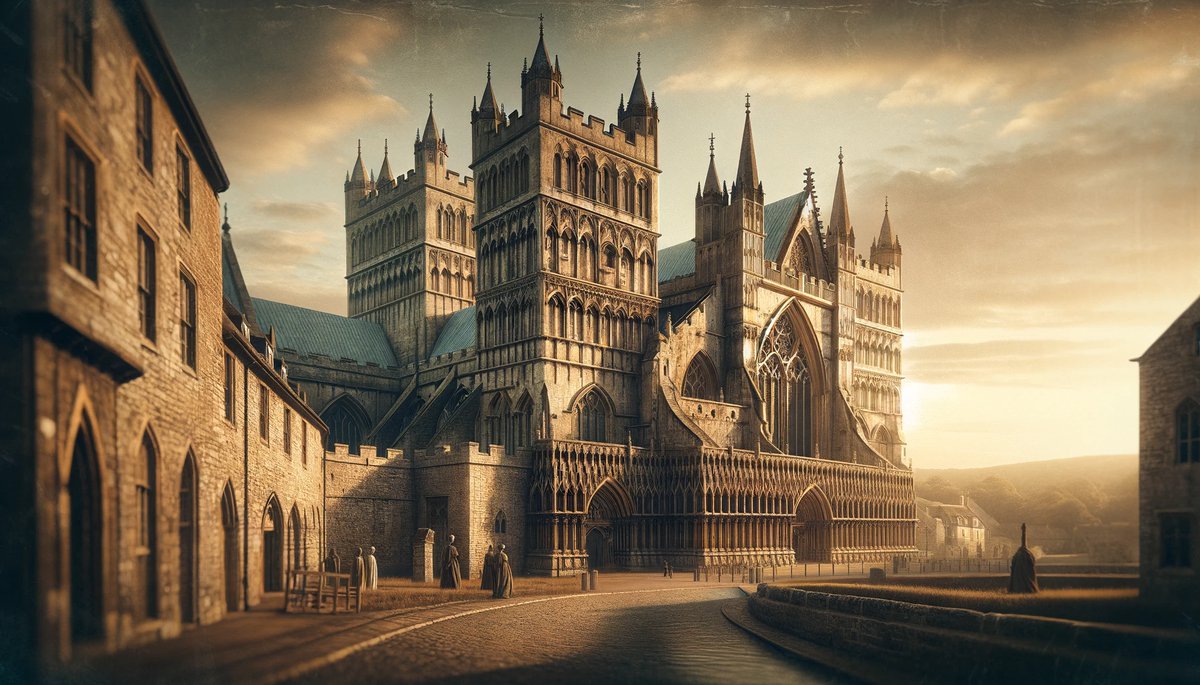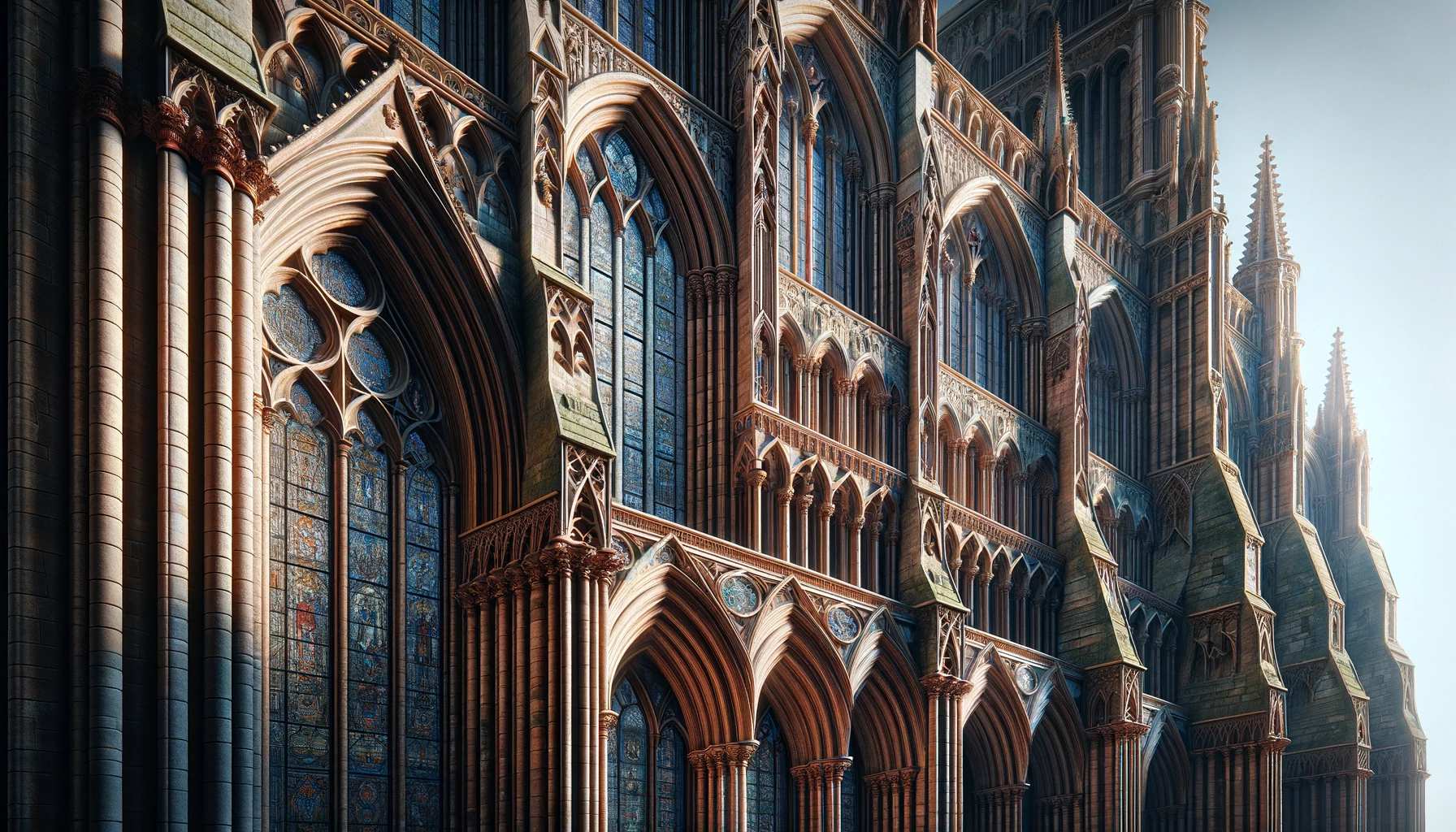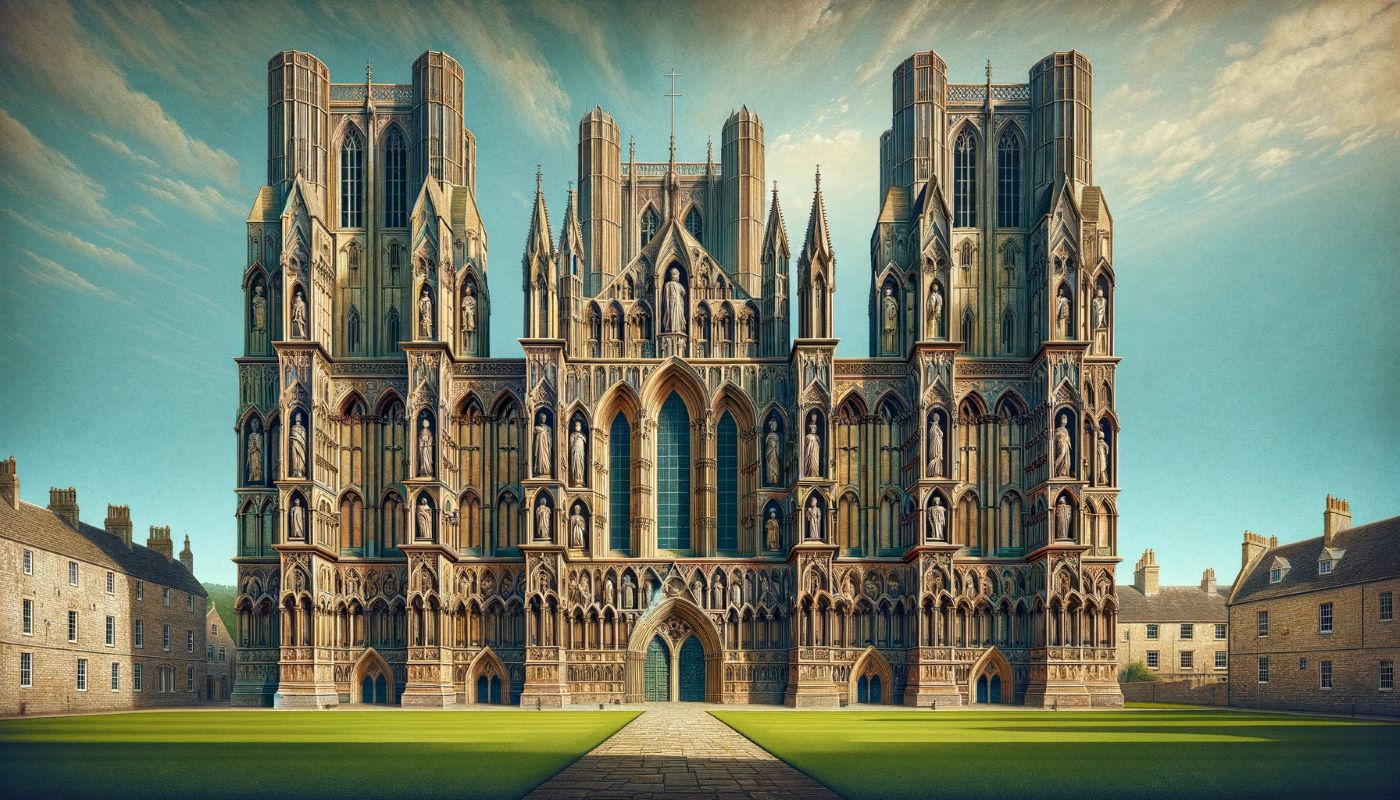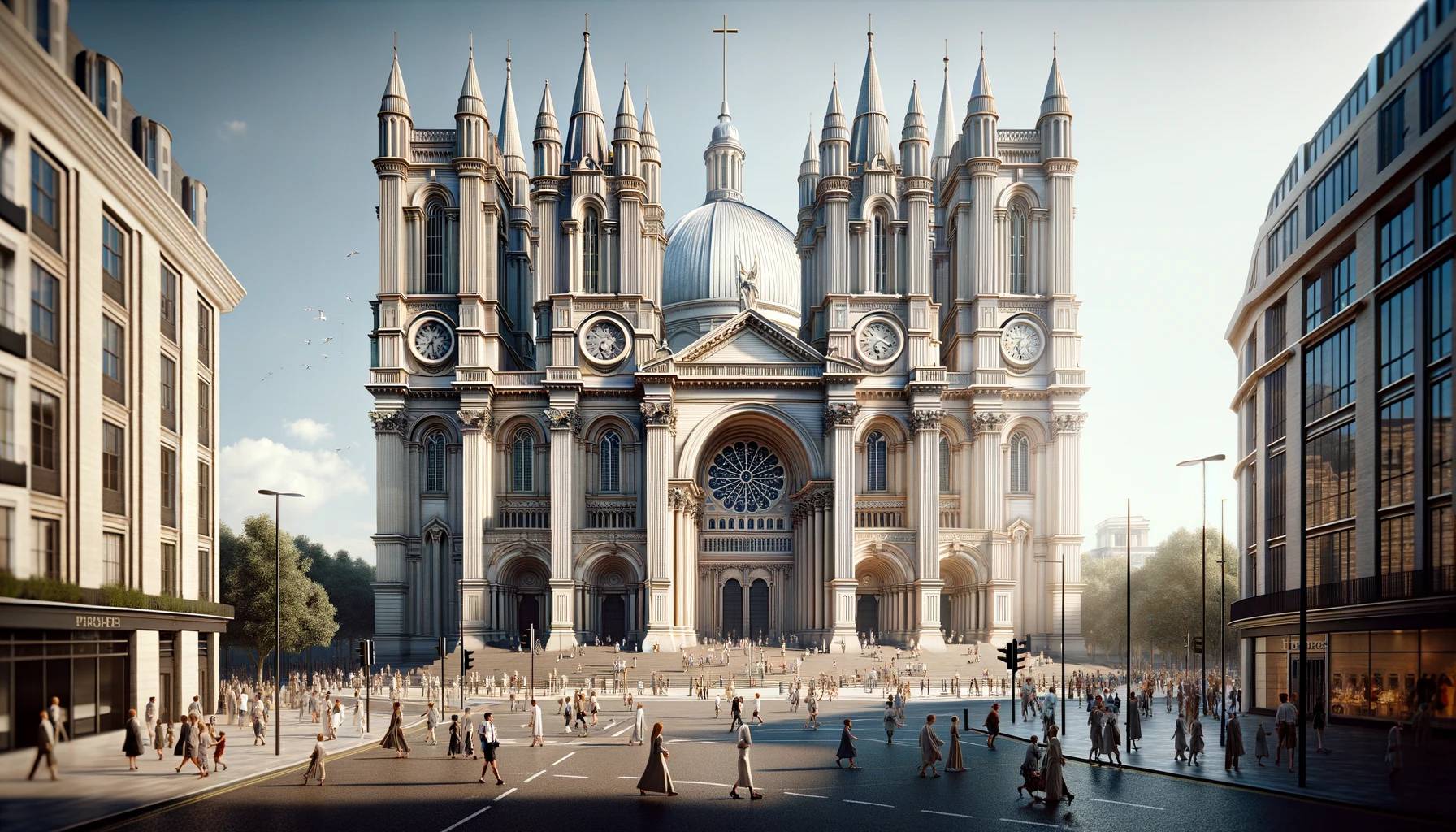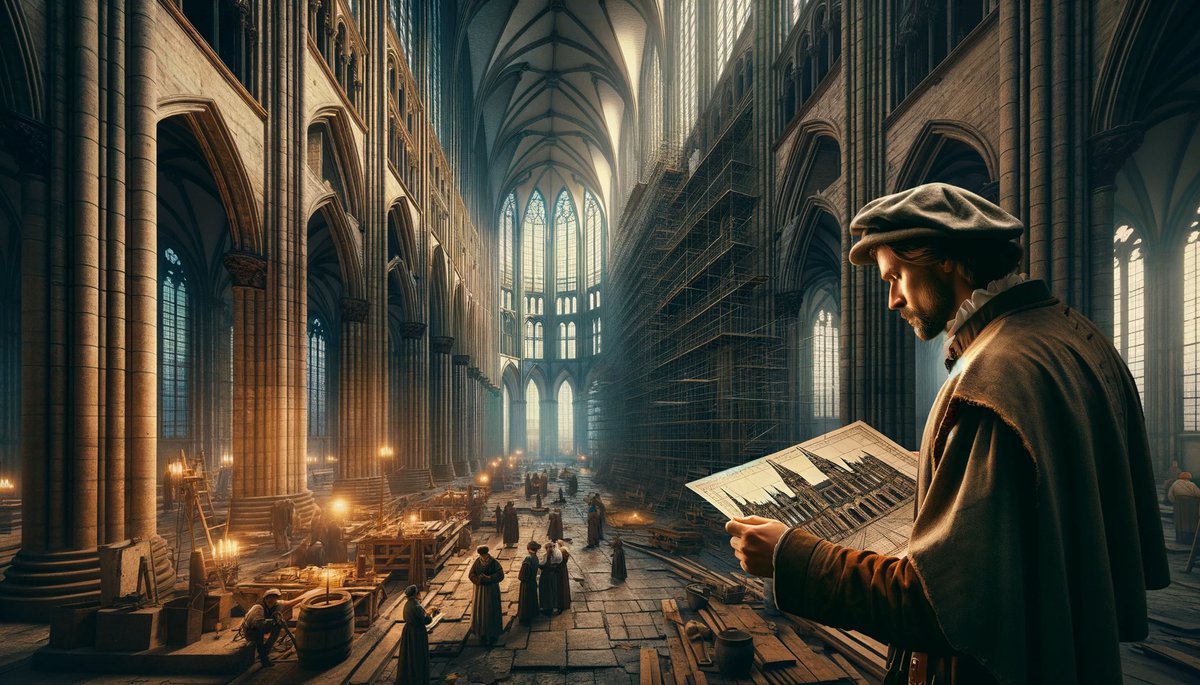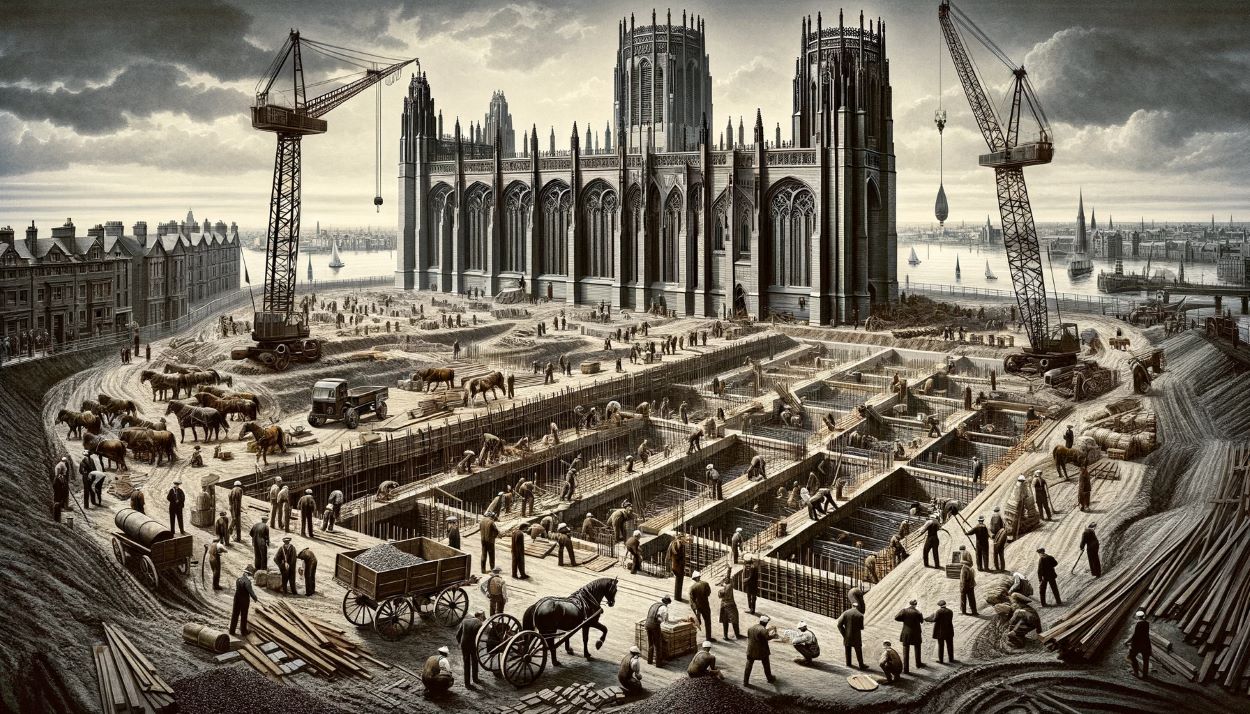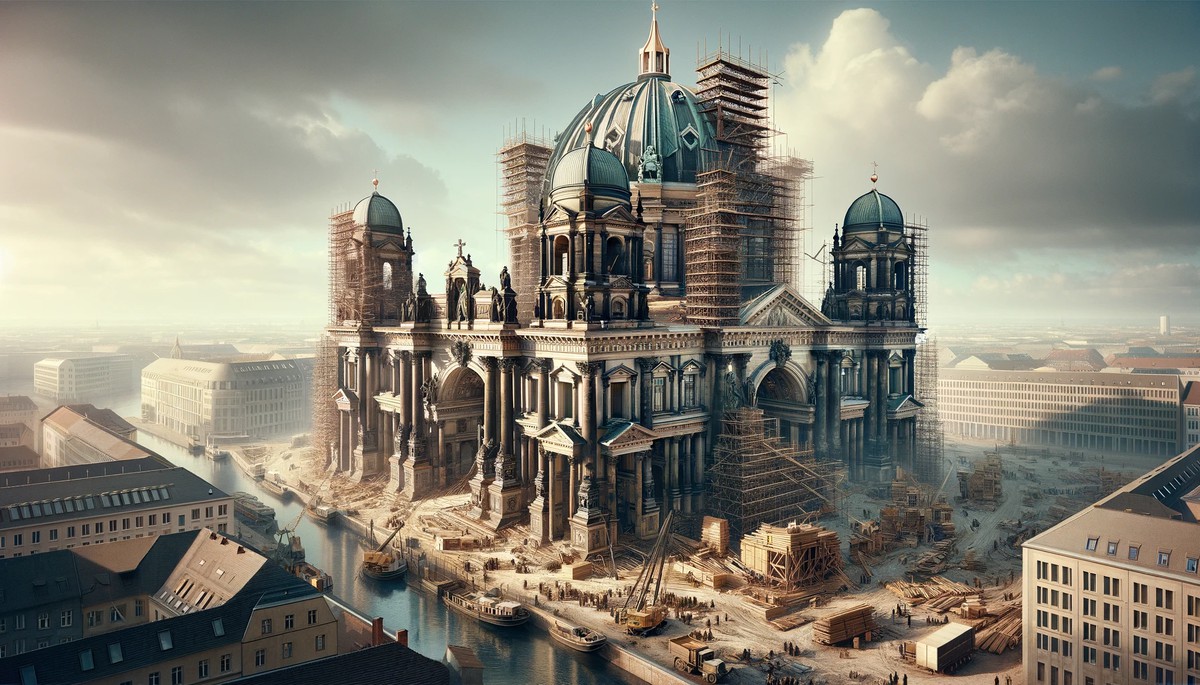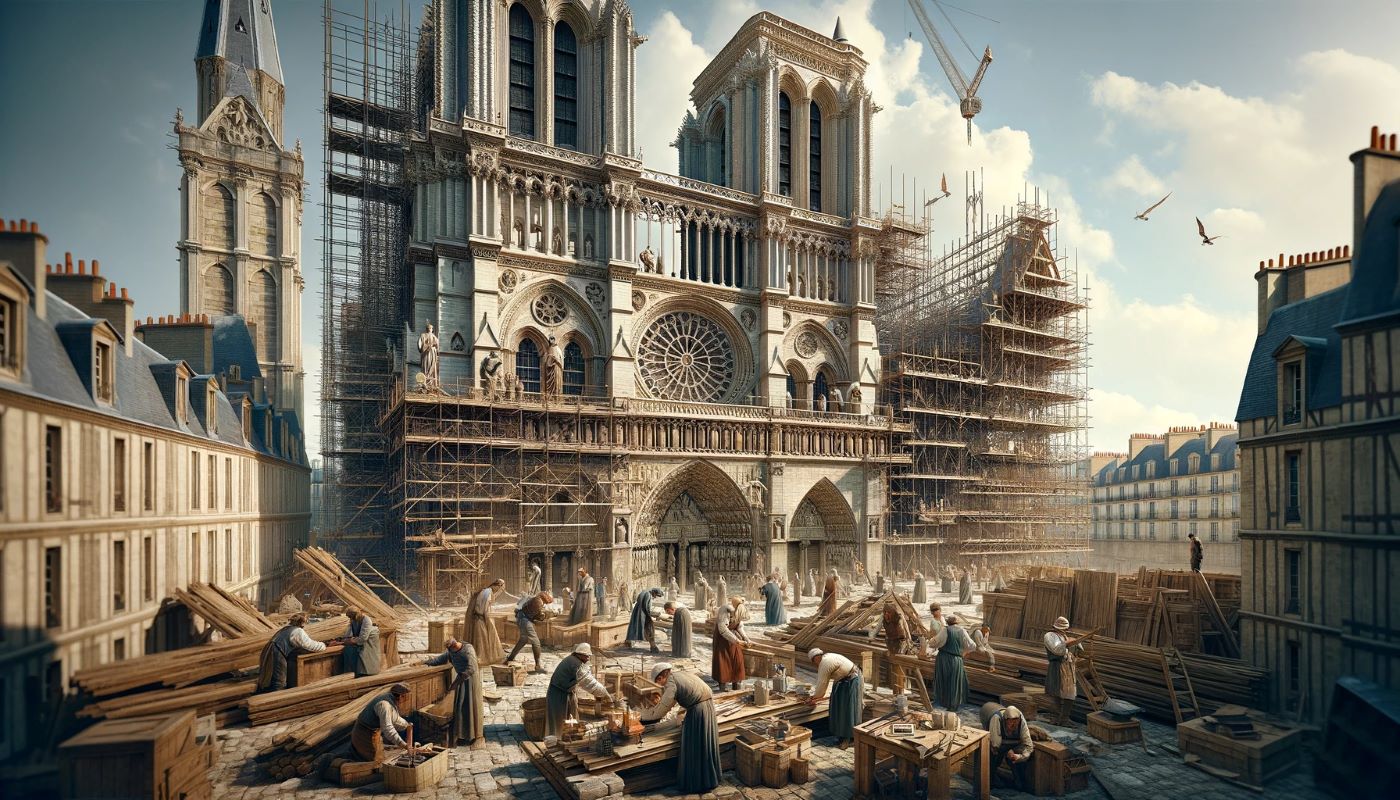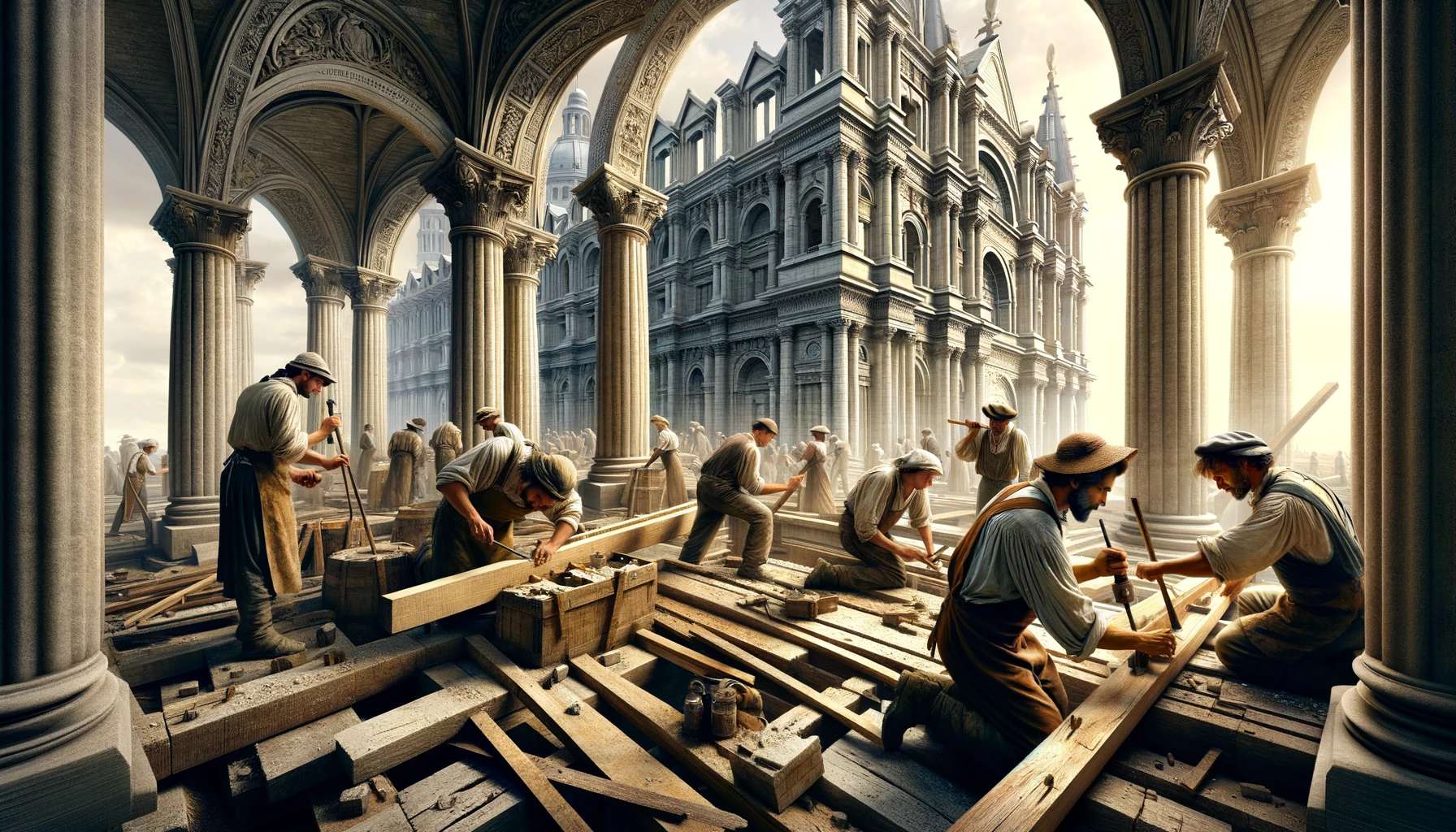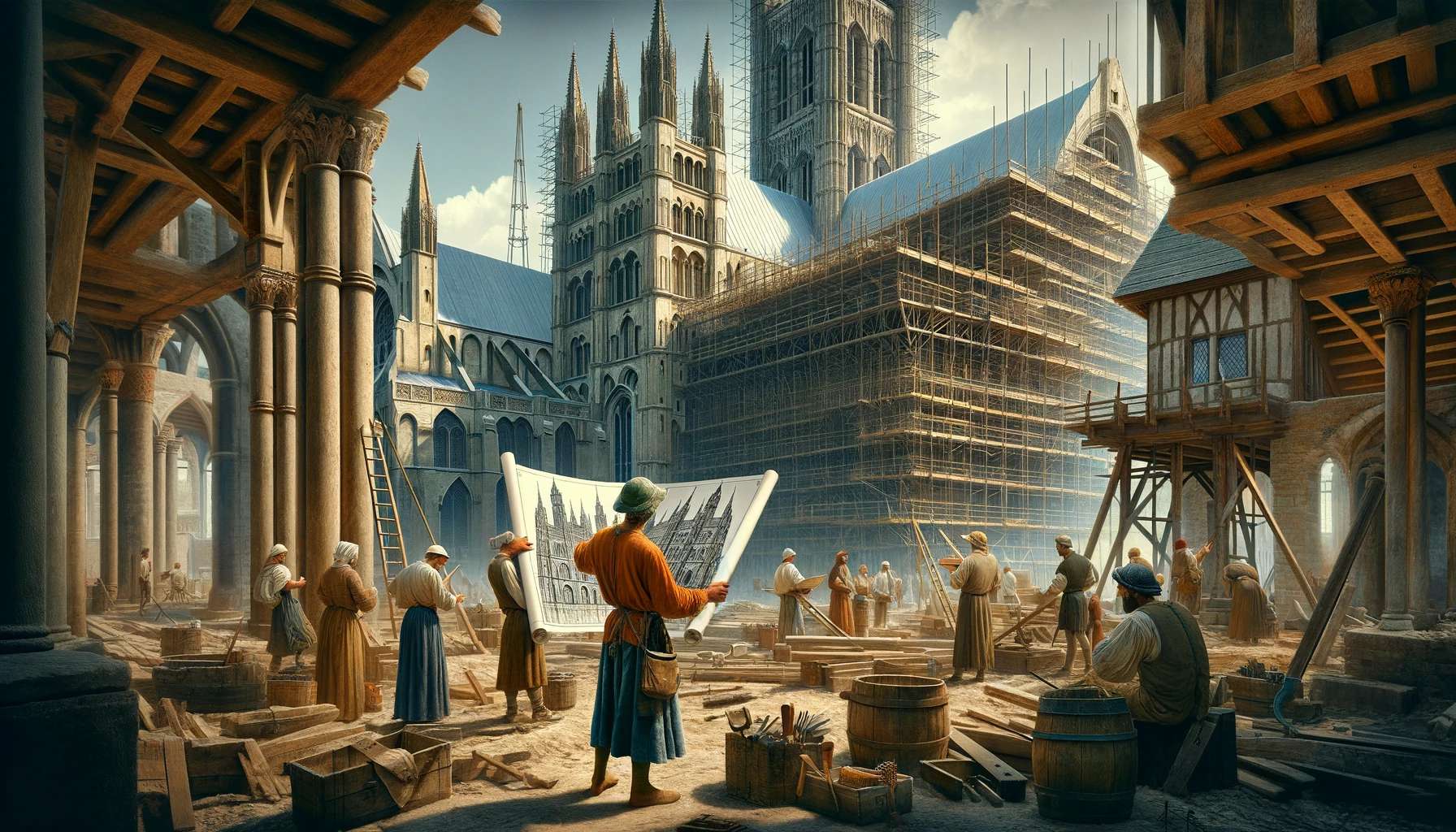Home>Arts and Culture>When Was Lincoln Cathedral Built
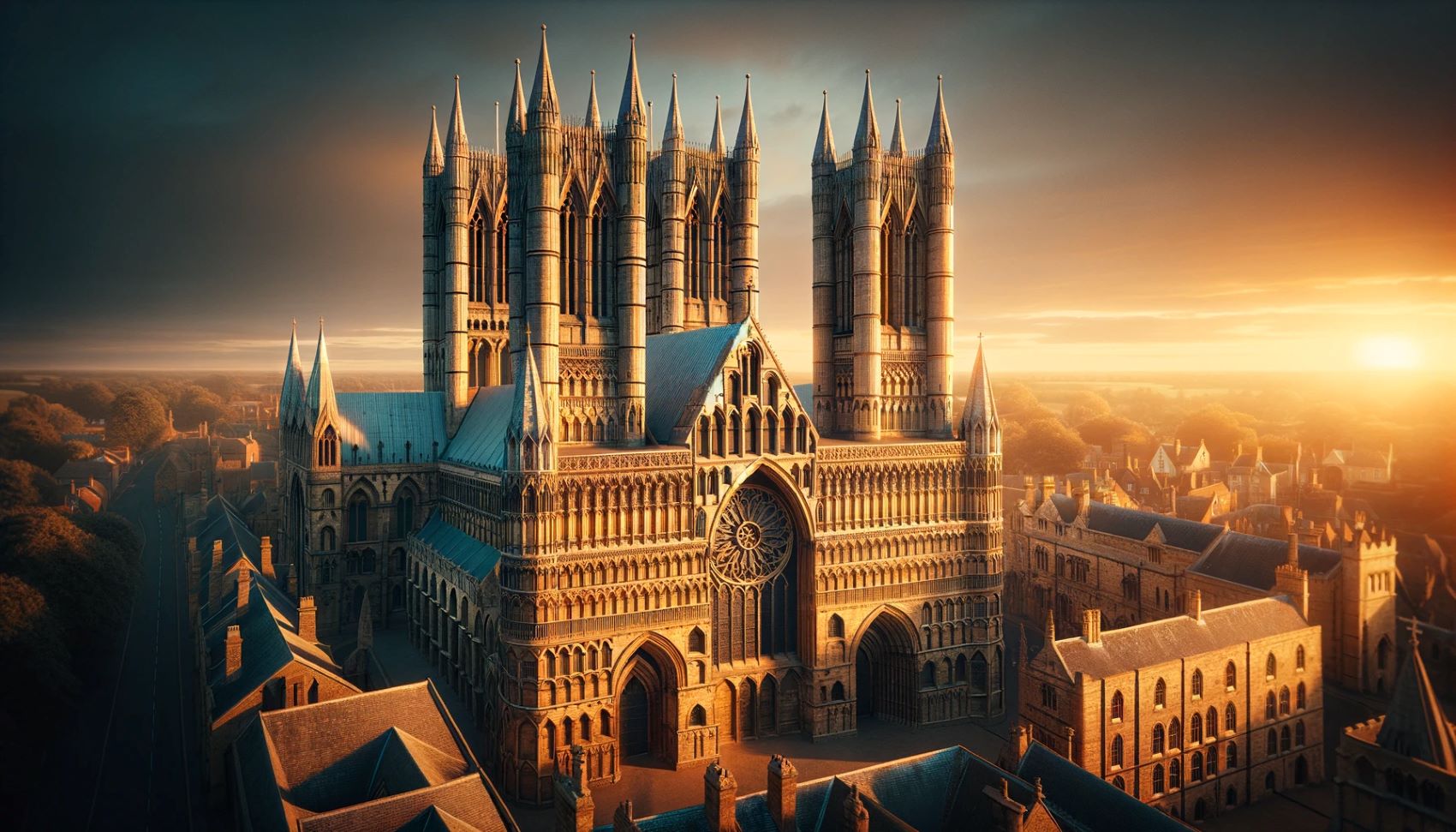

Arts and Culture
When Was Lincoln Cathedral Built
Published: February 16, 2024
Ericka Andersen, an editor at Christian.net, expertly merges digital strategy with content creation, focusing on faith and societal issues. Her communication skills enhance the platform's engaging narratives, fostering meaningful dialogue on belief's impact on society.
Discover the rich history of Lincoln Cathedral, a masterpiece of arts and culture, and learn about its construction and significance. Explore the architectural marvel and its impact on the cultural landscape.
(Many of the links in this article redirect to a specific reviewed product. Your purchase of these products through affiliate links helps to generate commission for Christian.net, at no extra cost. Learn more)
Table of Contents
Introduction
Lincoln Cathedral, a magnificent testament to medieval architecture and craftsmanship, stands as a symbol of spiritual devotion and human ingenuity. Its soaring spires and intricate stonework have captivated visitors for centuries, drawing them into a world where faith and artistry converge.
This awe-inspiring structure, also known as the Cathedral Church of the Blessed Virgin Mary of Lincoln, holds a storied past that intertwines with the history of England. From its early beginnings to the present day, Lincoln Cathedral has stood as a beacon of faith, a center of cultural significance, and a marvel of architectural achievement.
As we delve into the history and construction of Lincoln Cathedral, we will uncover the remarkable tale of how this iconic edifice came to be. From its humble origins to its rise as a towering masterpiece of Gothic architecture, the journey of Lincoln Cathedral is a testament to the enduring legacy of human creativity and devotion.
Read more: Lincoln Cathedral: When Was It Built
Early History of Lincoln Cathedral
The early history of Lincoln Cathedral is steeped in the rich tapestry of England's medieval past. The story of this architectural marvel begins in the late 11th century when William the Conqueror, the Duke of Normandy, seized the English throne. In the wake of his conquest, William sought to solidify his authority by commissioning the construction of grand cathedrals across the land, including the one in Lincoln.
The origins of Lincoln Cathedral can be traced back to the year 1072 when Remigius de Fécamp, a Norman bishop, laid the foundation for the first cathedral on the site. This initial structure, built in the Romanesque style, served as a cornerstone for the grand edifice that would later emerge. However, tragedy struck in 1141 when a devastating fire ravaged the cathedral, leaving it in ruins.
Undeterred by this setback, Bishop Alexander rebuilt the cathedral in the emerging Gothic style, marking the transition from Romanesque to Gothic architecture in England. The new cathedral, with its pointed arches and soaring vaults, reflected the innovative spirit of the age and set the stage for the awe-inspiring structure that stands today.
Throughout the centuries, Lincoln Cathedral continued to evolve, bearing witness to historical events and societal changes. Its soaring spires and intricate carvings became a testament to the unwavering faith of the people and the enduring legacy of craftsmanship. The cathedral's significance extended beyond its religious function, serving as a cultural and artistic hub that inspired generations of artisans and thinkers.
As the centuries unfolded, Lincoln Cathedral remained a steadfast presence, weathering the tides of time and bearing the marks of history upon its hallowed stones. Its story is intertwined with that of England itself, reflecting the nation's triumphs and tribulations, and standing as a testament to the resilience of the human spirit.
The early history of Lincoln Cathedral serves as a testament to the enduring legacy of medieval craftsmanship and the indomitable spirit of those who labored to raise its spires. It is a story of innovation, resilience, and unwavering faith—a story that continues to captivate all who gaze upon its majestic silhouette.
Construction of Lincoln Cathedral
The construction of Lincoln Cathedral stands as a testament to the ingenuity and dedication of medieval craftsmen and artisans. The ambitious endeavor to erect this grand edifice began in the 11th century and continued over several centuries, resulting in a stunning example of Gothic architecture that continues to inspire awe to this day.
The cathedral's construction commenced in 1072 under the guidance of Remigius de Fécamp, the first Norman bishop of Lincoln. The initial structure, built in the Romanesque style, laid the foundation for the grand vision that would unfold in the centuries to come. However, tragedy struck in 1141 when a devastating fire ravaged the cathedral, leaving it in ruins. This catastrophic event marked a turning point in the cathedral's history, leading to a renewed vision for its reconstruction.
Bishop Alexander, undeterred by the destruction, embarked on an ambitious project to rebuild the cathedral in the emerging Gothic style. This marked a pivotal moment in the history of English architecture, as the cathedral's transformation from Romanesque to Gothic reflected the innovative spirit of the age. The new cathedral, with its pointed arches, ribbed vaults, and soaring spires, showcased the remarkable advancements in architectural techniques and design.
The construction of Lincoln Cathedral was a monumental undertaking that required the collective efforts of skilled craftsmen, stonemasons, and laborers. The intricate carvings, delicate tracery, and towering spires demanded a level of precision and artistry that remains a marvel to behold. The cathedral's construction was a labor of love, driven by unwavering faith and a commitment to creating a sacred space that would stand for centuries to come.
As the centuries passed, the cathedral continued to evolve, with successive generations adding their own contributions to its construction and design. The enduring dedication to this monumental project speaks to the profound significance of Lincoln Cathedral as a symbol of spiritual devotion and human achievement.
The construction of Lincoln Cathedral stands as a testament to the enduring legacy of medieval craftsmanship and the unwavering spirit of those who labored to raise its spires. It is a story of innovation, resilience, and unwavering faith—a story that continues to captivate all who gaze upon its majestic silhouette.
Architectural Features of Lincoln Cathedral
The architectural features of Lincoln Cathedral stand as a testament to the ingenuity, artistry, and spiritual devotion of the medieval craftsmen who brought this magnificent edifice to life. From its soaring spires to its intricate carvings, the cathedral showcases a stunning array of Gothic design elements that continue to captivate visitors from around the world.
One of the most striking features of Lincoln Cathedral is its soaring spires, which rise majestically into the sky, reaching heights that were unprecedented in medieval England. The central spire, in particular, held the title of the tallest man-made structure in the world for over two centuries, a testament to the ambitious vision of its creators. The spires, with their delicate tracery and intricate detailing, serve as a testament to the skill and artistry of the craftsmen who brought them to fruition.
The interior of the cathedral is equally awe-inspiring, with its soaring vaults, slender columns, and expansive stained glass windows. The intricate ribbed vaulting, a hallmark of Gothic architecture, creates a sense of ethereal beauty and grandeur, drawing the eye upward toward the heavens. The stained glass windows, with their vibrant hues and intricate designs, suffuse the interior with a kaleidoscope of light, creating a transcendent atmosphere that speaks to the cathedral's spiritual significance.
The west front of Lincoln Cathedral is adorned with a stunning display of medieval sculpture, including the famous Lincoln Imp, a mischievous figure that has become an iconic symbol of the cathedral. The intricate carvings that adorn the façade depict scenes from biblical narratives, as well as a rich tapestry of medieval life and legend. Each figure and motif bears the mark of masterful craftsmanship, inviting visitors to marvel at the skill and artistry of the cathedral's creators.
The architectural features of Lincoln Cathedral, from its soaring spires to its intricate carvings, stand as a testament to the enduring legacy of Gothic architecture and the unwavering faith of those who brought this grand vision to life. As visitors gaze upon its majestic silhouette and explore its hallowed interior, they are transported into a world where art, faith, and human endeavor converge in a symphony of beauty and devotion.
Renovations and Restorations
The passage of time has not been without its challenges for Lincoln Cathedral, and throughout its storied history, the edifice has undergone numerous renovations and restorations to preserve its grandeur for future generations. These endeavors stand as a testament to the enduring commitment to safeguarding this architectural marvel and ensuring that its legacy endures for centuries to come.
One of the most significant restoration efforts took place in the 19th century under the guidance of the esteemed architect James Essex. His meticulous restoration work aimed to address the wear and tear that had befallen the cathedral over the centuries, ensuring that its structural integrity remained intact. Essex's efforts not only preserved the cathedral's architectural splendor but also set a precedent for future restoration projects, laying the foundation for the ongoing care and maintenance of this iconic structure.
In the 20th century, further restoration work was undertaken to address the impact of aging and environmental factors on the cathedral's stonework and interior features. The meticulous restoration of the stained glass windows, the delicate tracery, and the ornate carvings ensured that the cathedral's artistic treasures remained vibrant and awe-inspiring. These efforts were a testament to the unwavering dedication to preserving the cathedral's cultural and historical significance, safeguarding it as a living testament to the artistry of the past.
In recent years, ongoing conservation efforts have continued to uphold the legacy of Lincoln Cathedral, ensuring that it remains a beacon of architectural and cultural heritage. The meticulous care and attention devoted to the cathedral's preservation reflect a deep reverence for its historical and artistic importance, underscoring the commitment to passing on this treasure to future generations.
The renovations and restorations of Lincoln Cathedral stand as a testament to the enduring legacy of this architectural masterpiece and the unwavering dedication to its preservation. As visitors behold the cathedral's soaring spires and intricate carvings, they bear witness to the collective efforts of generations past and present, ensuring that this timeless symbol of faith and artistry continues to inspire and captivate all who gaze upon its majestic silhouette.
Read more: Who Built The Lincoln Cathedral
Conclusion
In conclusion, Lincoln Cathedral stands as a testament to the enduring legacy of medieval craftsmanship, unwavering faith, and the indomitable spirit of human creativity. From its humble beginnings in the 11th century to its rise as a towering masterpiece of Gothic architecture, the cathedral's journey is a captivating tale of resilience, innovation, and spiritual devotion.
The early history of Lincoln Cathedral, marked by triumphs and tribulations, reflects the enduring spirit of its creators and the communities that rallied around its construction. The cathedral's evolution from Romanesque to Gothic architecture mirrored the advancements of the age and showcased the remarkable vision of its builders.
The architectural features of Lincoln Cathedral, including its soaring spires, intricate carvings, and ethereal interior, continue to inspire awe and wonder. Each element bears the mark of masterful craftsmanship and unwavering dedication, inviting visitors to immerse themselves in a world where art, faith, and human endeavor converge in a symphony of beauty and devotion.
The renovations and restorations of Lincoln Cathedral, undertaken with meticulous care and reverence, underscore the commitment to preserving its cultural and historical significance. These efforts ensure that the cathedral remains a living testament to the artistry of the past, safeguarding its legacy for future generations to behold and cherish.
As visitors gaze upon the majestic silhouette of Lincoln Cathedral and explore its hallowed interior, they are transported into a world where the echoes of history resonate with the enduring spirit of human creativity and devotion. The cathedral's significance extends beyond its religious function, serving as a cultural and artistic beacon that continues to inspire and captivate all who behold its grandeur.
In the heart of Lincoln, this architectural marvel stands as a living testament to the enduring legacy of human ingenuity and unwavering faith—a legacy that continues to resonate through the ages, inviting all who cross its threshold to become part of its timeless narrative.
